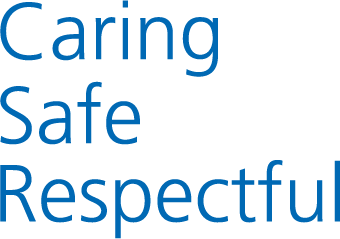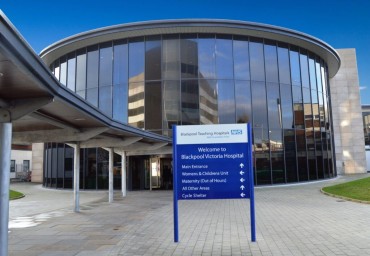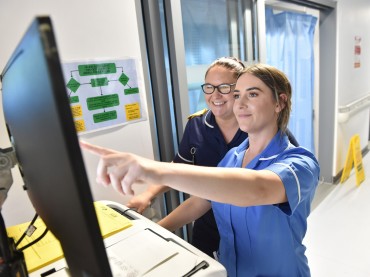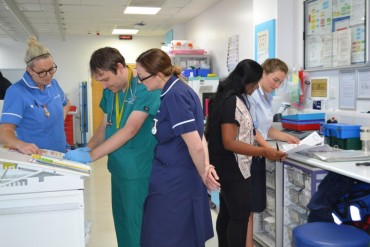Breast reconstruction involves complex surgery which can affect the movement and sensation at the shoulder joint, shoulder girdle and the thoracic spine.
The aim of physiotherapy is to regain movement at the shoulder and achieve functional use of the arm. If you require an inpatient stay a physiotherapist will review you the day after your surgery.
An outpatient physiotherapy appointment will be arranged for approximately 3 weeks after your surgery date.
A temporary tissue expander or permanent implant may be placed in a pocket below or above the chest muscle. Movements that involve using or overstretching this muscle should be avoided post operatively.
These include:
• heavy lifting
• pushing
• pulling
• reaching with the affected upper limb.
The implant position dictates the duration of time this muscle should not be used or overstretched, and for how long upper limb movement should be restricted to shoulder height. Your surgeon, breast care nurse or physiotherapist will inform you of the time frame but this is usually 2-3 weeks.
Driving may be commenced at approximately 6-8 weeks, under the instruction of your consultant.
An acellular dermal matrix (ADM) surgical mesh is a soft tissue substitute taken from a human or animal donor which is either attached over or attached to the chest muscle. An implant can be placed beneath it. The ADM acts as a scaffold for your tissue to eventually grow into. As with implant reconstruction, movements that involve using or overstretching the chest muscle should be avoided post operatively.
These include:
• heavy lifting
• pushing
• pulling
• reaching with the affected upper limb.
The position of the ADM dictates the duration of time this muscle should not be used or overstretched, and for how long upper limb movement should be restricted to shoulder height. Your surgeon, breast care nurse or physiotherapist will inform you of the time frame but this is usually 2-3 weeks. Driving may be commenced at approximately 6-8 weeks, under the instruction of your consultant.
Visit this website for more information.
Partial breast reconstruction using a perforator flap harvests skin and fat from a donor site to fill the void created by the removal of the cancerous breast tissue.
Movements that involve using or overstretching the breast tissue should be avoided post operatively until your consultant review. These include:
• heavy lifting
• pushing
• pulling
• reaching with the affected upper limb.
Upper limb movement should be restricted to shoulder height for approximately 2-3 weeks. Driving may be commenced at approximately 6-8 weeks, under the instruction of your consultant.
When a latissimus dorsi flap is used the muscle is removed from the back and attached to the chest.
This means movements that involve using or overstretching the chest muscle should be avoided post operatively for 4 weeks. These include:
• heavy lifting
• pushing up off the bed or from a chair
• pulling up with the affected arm
• reaching with the affected side
• pushing a trolley or pram.
Movement of the upper limb should be limited to shoulder height for the first 2-3 weeks. Driving may be commenced at approximately 6-8 weeks, under the instruction of your consultant.
Why Do I Need Exercises After My Reconstructive Surgery?
It is important that you follow your exercises as they will:
• Prevent shoulder stiffness and help you to regain and maintain full range of movement and strengthen your shoulder joint and muscles surrounding the joint
• Encourage circulation and promote healing of your scar tissue
• Prevent or ease any back or shoulder pain caused by the surgery
• Encourage flexibility and movement of your back.
These exercises should be completed the day following your Surgery. All exercises should be completed 2 to 3 times daily, performing 10 to 15 repetitions of each exercise. These exercises should be carried out until your outpatient physiotherapy appointment where your range of movement, recovery and exercises will be reviewed and progressed. If any exercises cause increased discomfort or worsening pain, discontinue and consult your physiotherapist.
These exercises should be completed the day following your surgery.
1. Pendula swings Stand leaning on a table with one hand. Let your other arm hang relaxed straight down. Swing your arm as if drawing a circle on the floor. Change direction.
2. Shoulder Shrugs Sit or stand. Lift your shoulders - relax.
3. Shoulder rolls Sit or stand. Roll the circles forwards and then backwards.
4. Shoulder flexion Stand or sit. Lift your arm forward assisting the movement with your other hand, observing the restriction to range of motion.
5. Shoulder Abduction Stand or sit. Lift your arm to the side, assisting the movement with your other hand, observing the restriction to range of motion.
6. Shoulder External Rotation Sit or stand. Keep upper arms close to the sides and elbows at right angles. Turn forearms outwards.
7. Shoulder blade retraction Sit or stand. Tighten the muscles between your shoulder blades.
8. Trunk rotation Sit on a chair and clasp your arms on your chest. Rotate your trunk to one side and then the other.
Post-Operative Activity And Care Advice
Hot and Cold Treatment:
It is recommended that in view of effects of the surgery on sensation, the application of extreme hot or cold should be avoided to prevent damage to the skin.
Scar Massage:
Scar tissue is produced as a result of the body’s normal healing process. Symptoms related to the scar can be relieved by regular daily massage. Once your wound is healed, dry and there are no inflamed areas (normally around 4 weeks), you can use a nonaqueous cream to massage your scar moving down the scar and then across. Incorporating scar massage with your exercises will help you to regain your normal range of movement.
Cording:
Cording can sometimes appear after your operation, more commonly for patients who have had most of the lymph nodes removed from the underarm. This may feel like tight bands in your armpit that can stretch down to your arm and can cause tightness and a painful sensation on movement of your arm. It is important to continue to keep your arm and shoulder moving by completing your exercises when you have cording to prevent any further tightness and to continue with scar massage. If symptoms persist please contact your physiotherapist or breast care nurse.
Physical Activity:
Light physical activity post operatively e.g. walking, is beneficial during the recovery phase. It can both improve your functional activity and aerobic fitness. It can also help to increase your energy levels, alertness and mood, whilst reducing side effects of fatigue and nausea.



